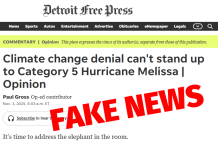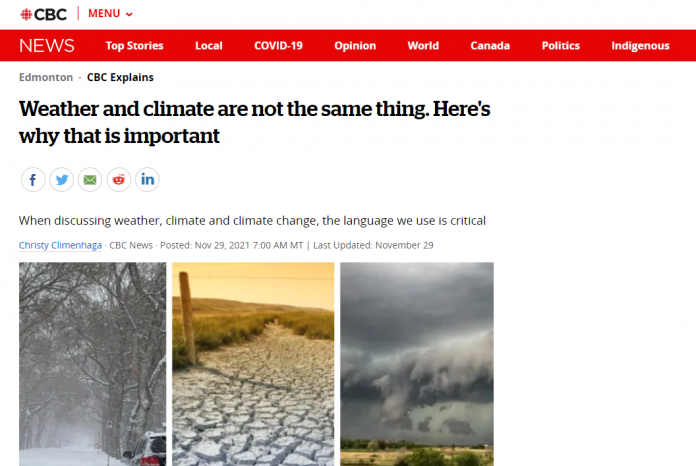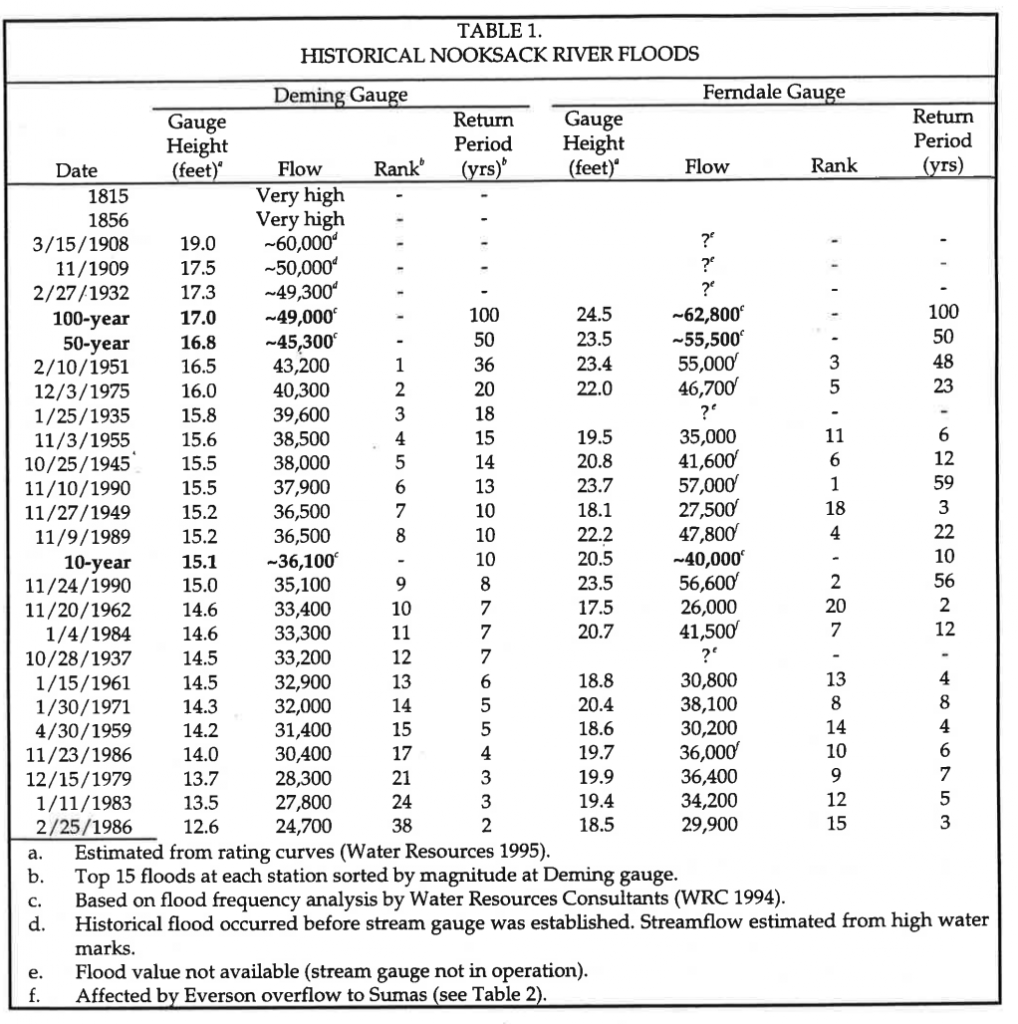Amid back to back “atmospheric rivers” bringing substantial amounts of rainfall to much of the Pacific Northwest, the Canadian Broadcasting Corporation published a thoughtful article, describing the difference between weather and climate. The CBC’s article titled, “Weather and climate are not the same thing. Here’s why that is important,” disposes of the notion that the repeated atmospheric river events causing flooding in many towns in British Columbia is caused by climate change. It is a weather event.
We all know the story: When a big storm hits, your social media feeds are inundated with photos and stories, and the conversation with friends and family inevitably turns to what is happening around us.
Whether it is flooding, like we are seeing in B.C., or a wintry blast like the one that recently hit Alberta and Saskatchewan, the events are usually accompanied by a whole lot of jargon to sift through.
Low pressure, jet stream, polar vortex, atmospheric river … the list goes on.
And even the most common terms — like weather and climate — can be deceiving.
Those two terms are sometimes used interchangeably and while they are linked, they actually refer to different things.
With weather and climate, the biggest factor is time.
Weather refers to the short term.
…
Weather systems can also bring extremely unusual conditions to an area ….
…
[C]limate is defined by long-term averages.
Climate refers to the atmospheric trends for an area.
It takes a look at specific weather conditions for a certain region and averages them over a set period of time.
Climate data is closely monitored over set periods of time.
This ensures that the data we see is the most accurate representation of our climate.
For example, most climate data from Environment and Climate Change Canada that we use to establish what’s “normal,” shows averages over the last 30 years, as opposed to the last 100 years.
Indeed, a region’s climate is typically measured in 30 year increments—the average temperature, amounts of precipitation, seasonal wind speeds, etc… over a representative 30 year period.
The CBC understands the difference between temporary, seasonal, weather events and long-term weather pattern changes which indicate a changing climate. Accordingly the CBC did not identify the current spate of atmospheric rivers striking the Pacific Northwest or the strong winter storm that traversed Alberta and Saskatchewan in mid-November as indications of climate change. They were weather events.
Unfortunately, other media outlets covering the atmospheric river event have not been so circumspect. CTV News, the Toronto Star, and the National Post, for example, each carried a story by The Canadian Press which discusses a “weather whiplash,” linking it to human caused climate change. A story in CTV News, titled “‘Weather whiplash’ ahead as Canada enters winter, Weather Network says,” is typical of the coverage.
The bulk of the story discusses the fact that wild swings in temperature, wind speeds, and snowfall are normal for this time of year across much of Canada, especially when La Nina conditions prevail.
“Weather Network chief meteorologist Chris Scott says colder water temperatures in the Pacific Ocean are creating what are commonly known as La Nina conditions, which often lead to drastic shifts across southern Canada,” says The Canadian Press story. “Scott says the result will sometimes feel like ‘weather whiplash’ this winter as temperatures and precipitation levels swing between extremes throughout the season.
“He says British Columbia and the bulk of the Prairie provinces are on tap to see above average precipitation and colder than average temperatures, noting the recent torrential rainstorms that caused widespread flooding in B.C. offer a particularly stark example,” writes The Canadian Press.
History shows atmospheric river events are normal in British Columbia, and across the wider Pacific Northwest in November, even when not enhanced by an El Nino.
This fact that the recent flooding is due to an entirely natural weather event is further confirmed by research conducted by University of Washington Professor Cliff Mass, Ph.D., and discussed in a recent Climate Realism story.
Unfortunately, rather than ending the story there, Scott and The Canadian Press stray into climate alarmism. Without citing any evidence of changes in long term weather averages, The Canadian Press story says:
While La Nina patterns are far from novel, Scott said the recent bouts of extreme weather that have washed away key pieces of infrastructure and even led to multiple deaths in British Columbia bear the hallmarks of broader climate change.
He likened the results of rising global temperatures to a pair of dice that have been subtly weighted to make certain weather events more or less likely.
A long-term shift in extreme swings in weather, higher high temperatures following lower lows, and greater amounts of rainfall than average following hard on the heels of extended droughts, accompanying a significant upward or downward change in average temperatures and precipitation across a region consistently over a 30 year period might well be a signal of climate change. But we don’t have that in the Pacific Northwest.
As a table that Mass provides details, flooding in the region affected by the recent atmospheric river event has been common throughout its history. (see the table below).
What we have across the region is a modest 100 year rise in average temperatures, with no measurable long-term increase in extreme weather events, or above or below average precipitation. Hence no evidence of dangerous climate change across the Northwest.
The long-term modest rise in temperatures has tracked population growth and development across the region and thus might be best accounted by the urban heat island effect rather than human caused climate change.
The CBC rightly follows the U.S. National Oceanic and Atmospheric Administration and other scientific bodies in distinguishing between weather and climate. There is no evidence climate change is responsible for or enhancing the incidences of extreme weather the Pacific Northwest has recently experienced. Rather than trying to turn every weather molehill into a climate change mountain, the corporate media should stick to reporting the facts and follow the science. The sciencey sounding claims made by climate alarmists may make for good headlines but they are false, intended to blur the lines between weather and climate for political gain.
























Man made climate change is the Trudeau mantra to back up his carbon tax rip off that is impoverishing a lot of lower income Canadians. Good to read an article that makes sense, you won’t see it newspapers, unfortunately.